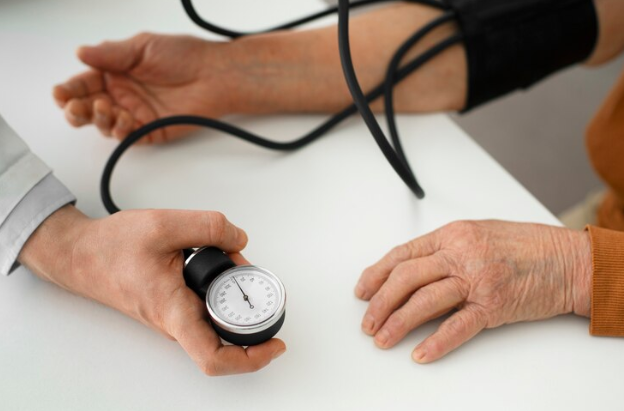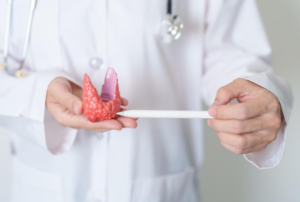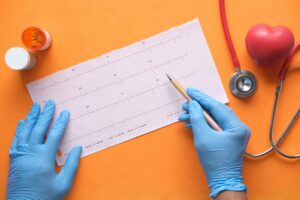Would you believe that nearly half of American adults have high blood pressure, yet many don’t even know it?
Just like anyone else in such a position, I too was greatly startled by the fact that I have suffered from “normal” headaches in my life only for the simple reason that it is indicative of high blood pressure in this case.
But this here actually made all the difference to me: preventable risk factors for cardiovascular disease increases by 10 percent with only a 5 point decrease in systolic blood pressure which means there is much to be done here.
If it is that blood pressure is such a worrisome area for you or even if you simply want blood pressure levels that are optimal, join me as I go through the latest research and potentially life-saving practical steps that I believe are extremely useful.

1. Understanding Your Blood Pressure Numbers
A Quick Guide to Interpreting Systolic and Diastolic Blood Pressure
A blood pressure reading is quite simply divided into two main components: the systolic and diastolic pressures. The top number in this case is called systolic pressure which can be understood as the pressure exerted by blood when the heart contracts which aims to push blood into the vessels.
Diastolic pressure on the other hand is actually measuring this same pressure except that this happens when the blood’s pumping organ is at rest.
Both the systolic and diastolic measures are necessary to have a good picture of the cardiovascular system health as high values of either one or even both indicate a heightened risk factor for heart failures or strokes.
Normal vs. Elevated Blood Pressure Ranges
A normal blood pressure reading is generally around 120/80 or lower. Elevated readings fall between 120-129 mm Hg for systolic pressure and less than 80 mm Hg for diastolic.
Hypertension is classified in stages, with stage 1 beginning at 130 over 80 and stage 2 being 140 over 90 or higher. This helps with health management as the range can be used in a particular manner.
How to Properly Measure Blood Pressure at Home
For accurate and conform results, the individual is required to sit back against a wall, have their legs resting on the ground, and be calm. Now, the individual is required to rest one of their arms at heart level, try not to talk, and wait for a minute or two before starting. A mechanized cuff to check blood pressure levels can also be handy for a proper reading.
Common Factors Affecting Readings
Readings of blood pressure can also change based on activity and environmental stresses, as well as time zones. This being said it is necessary to know the correct measurement system and try to repeat it as nearly as possible each time the measurement is undertaken.
Frequency of Monitoring Recommendations
For people with normal blood pressure, self-checking a few times in a time span of three months should be sufficient. However, people with elevated and high blood pressure need to check the levels more frequently, especially if they are changing their lifestyles or taking medications.
Related Articles:
- Welch Allyn Blood Pressure Monitor – Is it Accurate?
- Does Dehydration Cause High Blood Pressure?
- Equate Blood Pressure Monitor – Is It Accurate?
2. Natural Ways to Lower Blood Pressure
Evidence-Based Dietary Changes (DASH Diet Focus)
We know that the Dietary Approaches to Stop Hypertension or the DASH diet helps a lot in terms of reducing blood pressure. Including more fruits, vegetables, whole grains, lean meat, and low-fat dairy products while reducing sodium, sugars and fats. Such a balanced diet boosts heart and general health as well.
Exercise Recommendations and Impact
Adopting regular exercises can lower blood pressure through cardiac strength and circulation boost. A total of at least 150 minutes of moderate aerobic activities per week such as walking, cycling, or swimming must be done. Maintaining strength is also important and may add to cardiovascular support.
Stress Management Techniques
Patients with this illness should take real chronic stress rather seriously because it is an important cause of increased blood pressure. Activities such as meditation, management of breathing cycles, and using mindful psychology can minimize the levels of stress hormones which will assist with blood pressure control. Learning the sources of stress and replacing them should also be the tools used for effective hypertension management.
Sleep Quality Importance
Heart health is dependent on the blood pressure level. Stress hormones and blood pressure levels have an association with poor sleep. It is recommended that it aim for at least seven to nine hours of healthy sleep daily by developing a bedtime routine that allows one to relax, and avoid caffeine or electronics before bedtime.
Weight Management Strategies
Carrying excess weight brings about stress to the heart and consequently increases blood pressure. Even the smallest weight reduction has the potential of being beneficial as one can have a substantial decrease in their blood pressure levels. This is regarding a diet with the right proportions combined with regular exercises and control of body weight.
3. Lifestyle Factors Affecting Blood Pressure
Impact of Sodium Intake
Excessive sodium intake from diet is the primary factor associated with hypertension. Halving and reducing the number of processed and salty foods beside opting for fresh ingredients helps to reduce sodium exertion levels benefiting blood pressure levels.
Effects of Caffeine and Alcohol
One should note that caffeine raises blood pressure temporarily, and thus, moderation is advised to avoid readings taken immediately before caffeine intake.
It is also worthwhile noting that excessive drinking of alcohol does influence blood pressure, but normal moderation of drinking up to one for women and two for men does not have an impact on blood pressure levels.
Role of Smoking and Nicotine
When it comes to nicotine, the daily consumption can trigger the constriction of blood vessels leading to high blood pressure. There are both short and long-term effects of stopping smoking and these effects work to help in lowering blood pressure and reducing any probability of heart-associated diseases.
Exercise and Physical Activity Benefits
Consistent physical exercise boosts elasticity of blood vessels and enhances the strength of the heart which leads to lowering the blood pressure. It is easier to be active all the time if one has activities that they enjoy, whether walking, dancing or sports.
Stress and Emotional Factors
There is a direct relationship where blood pressure is influenced by stress and stress emotions and feelings. Sustained stress can lead to chronic high blood pressure which stacks the odds against disease prevention and thus makes stress management measures effective for controlling heart stress.
Mindfulness and other positive coping strategies have also been practiced and have helped to lower stress and in due process blood pressure as well.
4. Diet and Nutrition for Healthy Blood Pressure
Best Foods for Lowering Blood Pressure
The cells in the human body require potassium, magnesium, and fiber, the deficiency of which can lead to high blood pressure. Foods that are rich in these nutrients are bananas, now spinach, whole grains, beans and nuts, and fish such as salmon. These types of food enhance cardiovascular health by widening blood vessels and controlling sodium content.
Foods to Avoid or Limit
For blood pressure control, avoid excessive sodium and avoid consuming processed, trans-fat, and sugar-sweetened foods. Eating such processed, sugar-laden snacks, and oily food items on a regular basis are direct risks for increasing blood pressure.
Beneficial Supplements and Minerals
Heart-healthy minerals and vitamins include potassium, magnesium, and omega-3 fatty acids. Vitamin and mineral deficiencies can be addressed by their supplementation under a physician’s supervision along with a healthy diet for effective blood pressure control.
Meal Planning Strategies
Eat heart-healthy foods such as vegetables, fruits, lean protein, and whole grains in your heart-friendly portion meal plan. Reducing sodium level when preparing meals at home and watching portion sizes can be of benefit for improving overall health status.
Hydration Importance
Appropriate body water content is paramount for normal blood circulation and even blood pressure stability. Maintaining hydration by consuming water during the day helps to prevent vascular stiffness which causes extra work for the heart.
5. Warning Signs and When to Seek Help
Emergency Symptoms to Watch For
Patients with hypertension can develop hypertensive emergencies. Seek appropriate care within the shortest time possible when you notice pain in the chest, difficulty expressing oneself, vision changes, or pain in the head.
Regular Monitoring Guidelines
Monitoring of blood pressure levels at home should become a common habit as it will assist the client to be aware of any changes that occur. Consistent monitoring of blood pressure readings gives insight into their trends and enables clients to raise any issues with their medical practitioners.
Risk Factors to Consider
Blood pressure levels may be high due to a number of reasons: Age, family history of a relation suffering from hypertension, or any other medical condition. This enables them to take measures relevant to them and their risk factors.
Family History Importance
One of the factors that need to be considered before developing a treatment plan is relatives’ history. In the event that relatives are suffering from high blood pressure, the chances of relatives having are high; thus it’s good to monitor regularly, and that lifestyle changes will help in controlling the high levels.
Healthcare Screening Recommendations
The main goal of routine healthcare screenings is to identify any rising cases of high blood pressure. It is advisable for those in danger to get checkups once a year and those with high blood pressure can attend the clinic more often.
6. Working With Healthcare Providers
Questions to Ask Your Doctor
Set with your doctor any expectations as far as blood pressure readings are concerned, changes in lifestyle, and possible ways of treating them efficiently. This ensures that the client gets the help they require and are properly directed.
Treatment Plan Development
A member of the healthcare team can develop and write out a treatment plan that is suitable for the patient. Some of the interventions may include cessation of lifestyle practices, dietary modifications, or even prescriptions of medications where necessary.
Monitoring and Tracking Progress
Self-monitoring of blood pressure with your healthcare provider’s recommendations includes notifications of progress. If you find yourself working towards a particular plan, make the necessary alterations to aid in getting optimal levels.
Medication Considerations
In the case of zero effectiveness, the physician may prescribe your medication. It is advisable to learn about the different possibilities of these medications and the most likely negative outcomes as well as anti-forgetfulness strategies.
Follow-Up Care Importance
Monitor your blood pressure through regular check-ups, that’s the best way to ensure long-term control of the condition and many patients fit in this quite well. It also helps you open up on several issues including changing treatment plans that are not working and thereby keeping to the health plan that you had set up.
However, even after learning through these 3 strategies, “how to manage high blood pressure,” one intensity does not feel overwhelmed! Make healthy changes to your lifestyle, including understanding your numbers. Even small changes can have a big impact: for example, things like taking a walk every day, not eating too much salt, and learning how to relax.
Begin with the basics first such as regularly taking your blood pressure and addressing any challenges with your doctor. You just know that this is going to be quite a catching task.


